#assassin bugs
Explore tagged Tumblr posts
Text


Wheel Out the Wheel Bug
The wheel bug, also known as Arilus cristatus, is a member of the assassin bug family found throughout eastern North and Central America. They thrive in a variety of environments including grasslands, deciduous and tropical forests, and gardens; anywhere where flowers are abundant.
The wheel bug is so named for the distinctive, spiny wheel-shaped hump along its thorax and abdomen. The body is otherwise elongated and dark grey with white spotting. As an assassin bug, the species also sports an enlarged proboscis for deeding. This species is also noted for being one of the largest true bugs endemic to North America, at a whopping 3.8 cm (1.5 in) long.
As an assassin bug, A. cristatus is a voracious predator within its natural habitat. Individuals catch caterpillars, beetles, sawfly larvae, aphids, and stink bugs with their long forelimbs and then inject their target with a potent paralytic, dissolving its insides and slurping up the resulting soup. Due to their spiky bodies and painful bite, the wheel bug has few natural predators. However, eggs are often prey to parasitic wasps.
Wheel bugs begin mating in September and continues throughout the fall. After mating, the female lays anywhere from 40 to 200 eggs on a leaf, in a cluster resembling a cylindrical honeycomb. The eggs incubate over the winter and juveniles emerge the following spring. They mature throughout the summer and become full adults the following fall, where they mate and then die.
Conservation status: The wheel bug has not been evaluated by the IUCN, but populations are widely dispersed throughout its range and the species is generally ecologically stable. In many areas, it is one of the only predators of other invasive or pest insect species.
Photos
Rick Kelly
Seth Ausubel
Richard Orr
#wheel bug#Hemiptera#Reduviidae#wheel bugs#assassin bugs#true bugs#bugs#insects#arthopods#generalist fauna#generalist arthropods#grasslands#grassland arthropods#urban fauna#urban arthropods#north america#eastern north america#central america#eastern central america
104 notes
·
View notes
Text
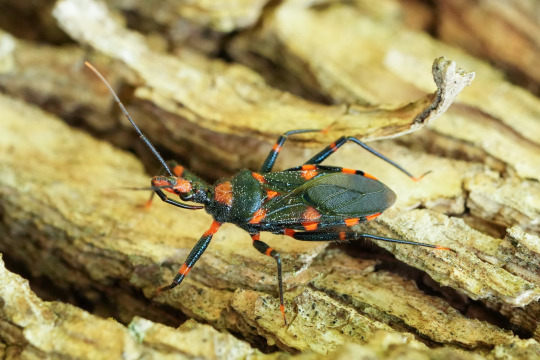
a Red Tiger Assassin Bug, common in the region but my first time seeing one.
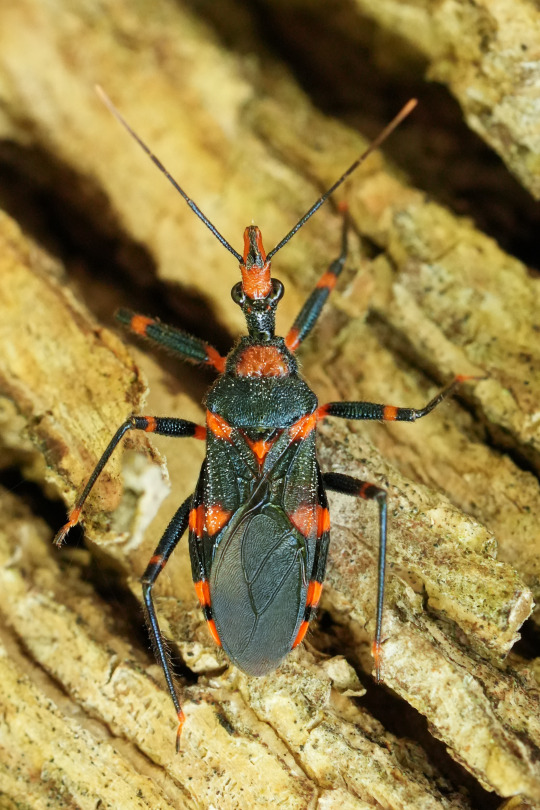
this individual was slowly exploring one of our Jacaranda trees, searching for a meal. this last photo offers an excellent view of their sucking mouthparts, found in all true bugs but specialised in assassins for subdueing and consuming small insects as prey.
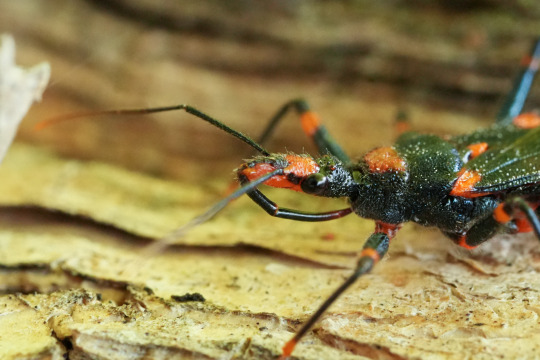
Red Tiger Assassin Bug (Havinthus rufovarius).
#ljsbugblog#bugblr#entomology#macro#insects#hemiptera#heteroptera#true bugs#reduviidae#assassin bugs#harpactorini#havinthus#havinthus rufovarius#red tiger assassin bug
201 notes
·
View notes
Text


[ID: 1: Two grey and black wheel bugs on leaves.
2: A grey and black wheel bug on a white-painted wall, holding a ladybug. /End ID]
NORTH AMERICAN WHEEL BUGS! I was graced with the presence of three separate specimens while I was walking around a nature area outside of my local natural history museum, and extra graced by finding one mid-meal! You can tell that these aren't adults because they don't have their "wheel" yet!
Location: Brazos, TX
141 notes
·
View notes
Text



[PHOTOS TAKEN: NOVEMBER 2ND, 2024 | Image IDs: Three photos of a brown thread-legged bug on a window frame /End IDs.]
One may think this is a typical stick bug, but, as it turns out, this is actually a thread-legged bug, a type of assassin bug!
#Emesinae#Thread-legged bugs#assassin bug#assassin bugs#reduviidae#true bugs#bugs#bug#Hemiptera#insect#insects#entomology#bugblr#arthropod#arthropods#invertebrates#Inverts#photos#photo#Wasp House Sights
33 notes
·
View notes
Text
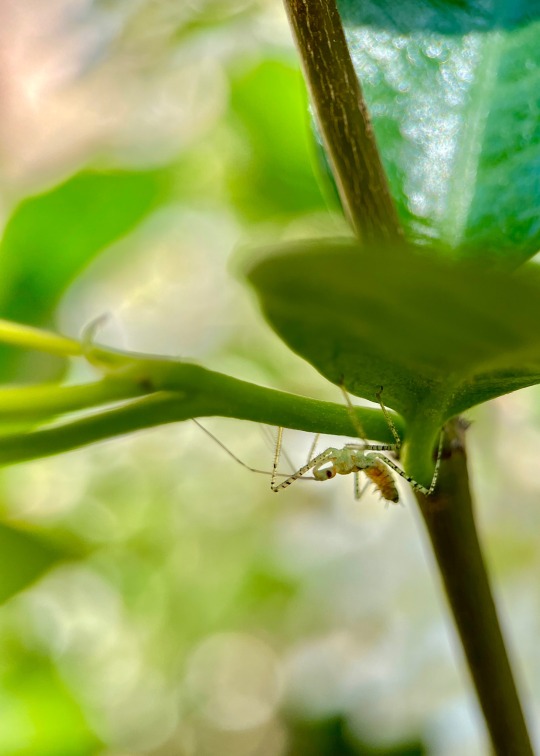
Assasssin bug nymph / family Reduviidae
#insects#bugs#assassin bug#assassin bugs#Reduviidae#my photos#no new photos again sorryyyyy#it’s too winter I think
29 notes
·
View notes
Text

Small green beast
Pale Green Assassin Bug
16 notes
·
View notes
Text
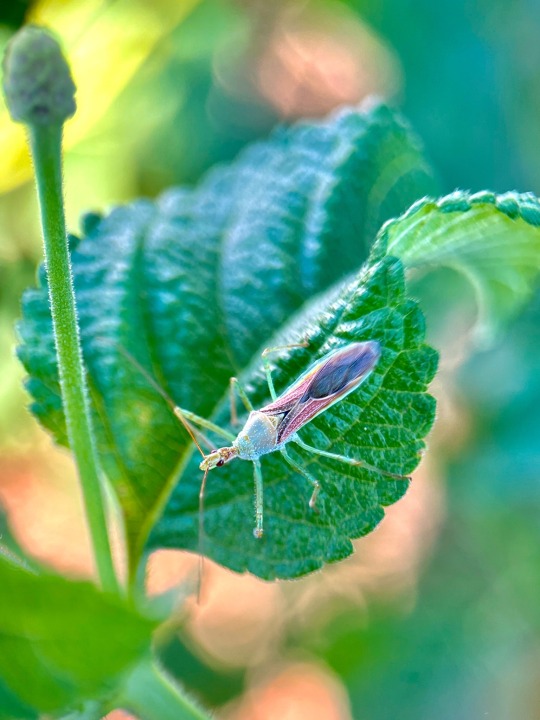


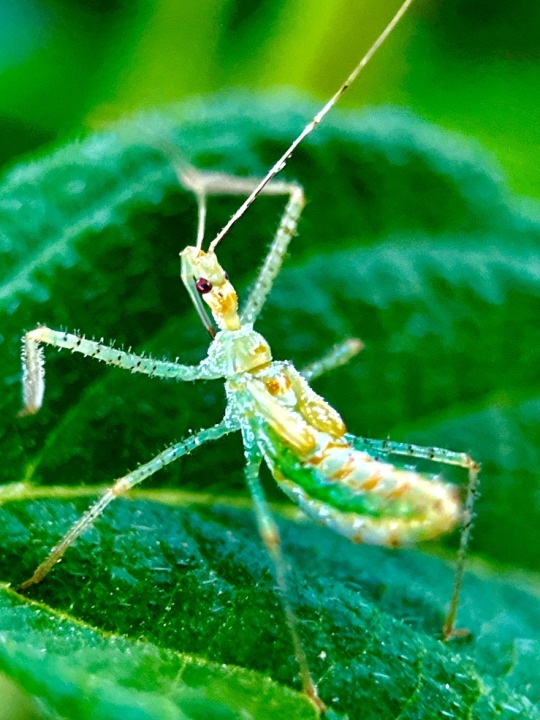
Assassin bugs / family Reduviidae; probably genus Zelus (adults on the left, nymphs on the right)
I promise you this isn’t an insect blog. I swear to you it’s not. ANYWAY this genus produces sticky resin to help trap prey and has been studied as a non-chemical method of pest control in agriculture, since they tend to hunt smaller plant-eating insects and do not damage the plants themselves. They have a scary stabby proboscis that curves around under their heads; you can see it pretty well on both nymph photos, and not at all in the adult photos because with those I was only focusing on the pretty colors (like a true naturalist would).
#insects#bugs#assassin bugs#Reduviidae#I’m sorry#I will just rebrand the spider blog maybe because I’m not gonna find many photogenic outdoor spiders in the winter anyway
32 notes
·
View notes
Text
If your girl has
bulbous eyes
piercing-sucking mouthparts (beak)
raptorial legs
cogwheel-like structure
that’s not your girl that’s wheel bug!

(photo from this article)
4 notes
·
View notes
Text

P. barberi having a liquid dinner of ant My iNaturalist 📸: Nikon COOLPIX P1000
10 notes
·
View notes
Text
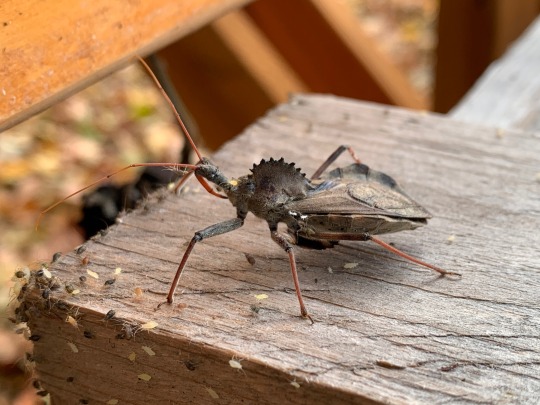
THE MAGNIFICENT WHEELBUG
2 notes
·
View notes
Text

Run your own race
#Bug people#Slug#Tiger beetle#assassin bug#wheel bug#Beetle#The wheel bug is there bc the spin machines were out of order that day :/#my art
6K notes
·
View notes
Text
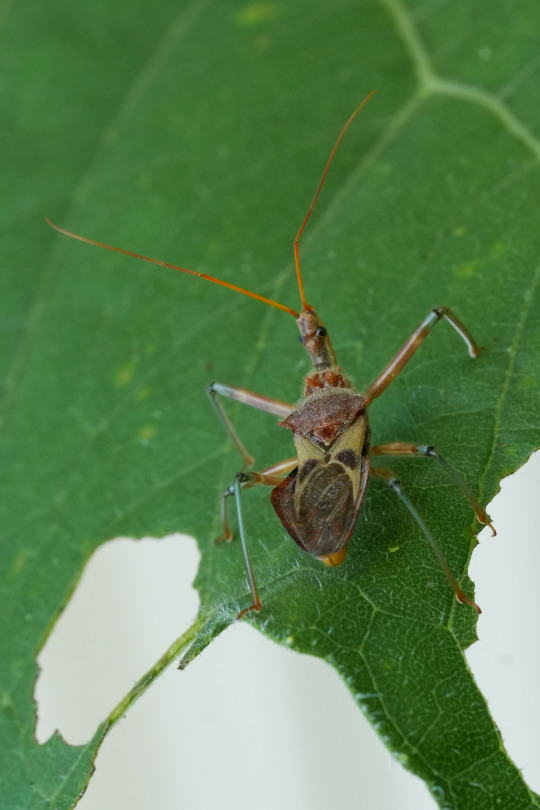
a few weeks ago I posted a photo of an assassin bug nymph (Pristhesancus plagipennis), and now here's an adult traversing one of our sunflowers in search of a meal!

wasn't long before she came across one of the many species of caterpillar feeding on the leaves, and attempted to attack.
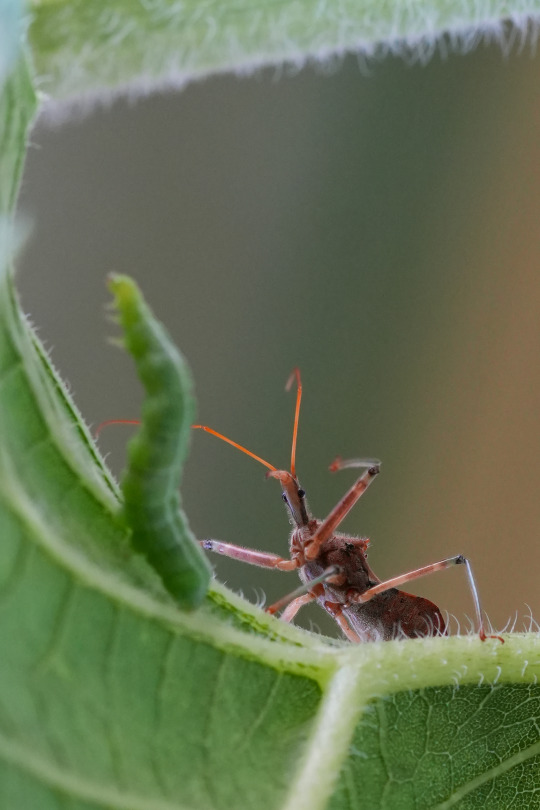
P. plagipennis are known to prey on a variety of insects, notably stinkbugs (Musgraveia sulciventris) and honey bees, the latter earning it the nickname of 'Bee-Killer Assassin Bug', which I personally find a bit dramatic.
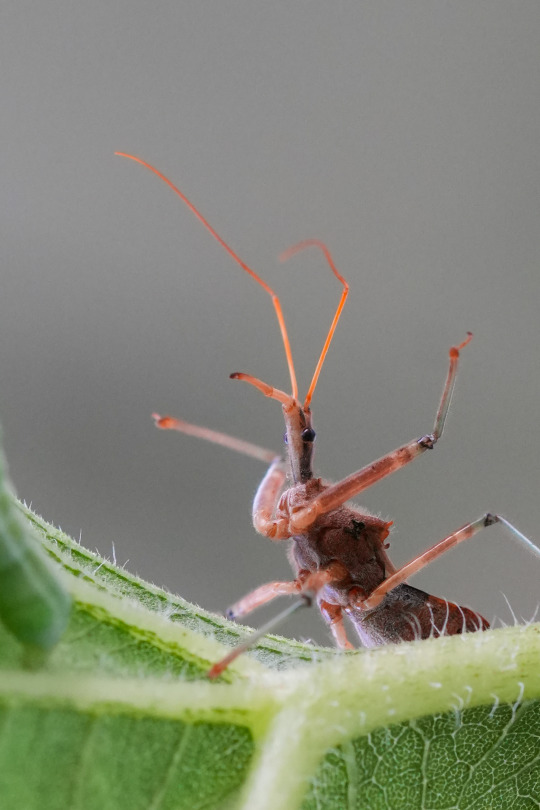
the caterpillar won this encounter, adopting a defensive posture and thrashing its body whenever the assassin got too close. after a brief standoff with her piercing mouthparts unfolded, she walked away to search for easier prey instead.
No common name (Pristhesancus plagipennis).
#ljsbugblog#bugblr#entomology#macro#insects#hemiptera#heteroptera#true bugs#reduviidae#assassin bugs#pristhesancus#pristhesancus plagipennis
220 notes
·
View notes
Text


This funky friend is a leafhopper assassin bug NYMPH (Zelus renardii)! These fellas are native to North and Central America, and they use a sticky substance on their legs to catch prey!
This nymph will grow up to be an adult that looks like this:

(Photo by Sagehuz on iNaturalist, under a CC-BY-NC license)
#bug lovers#bugs#entomology#bug photography#bug photos#hemiptera#assassin bugs#heteroptera#ID in alt#Just to be clear the first two photos belong to me but the third photo is not mine.
2 notes
·
View notes
Text


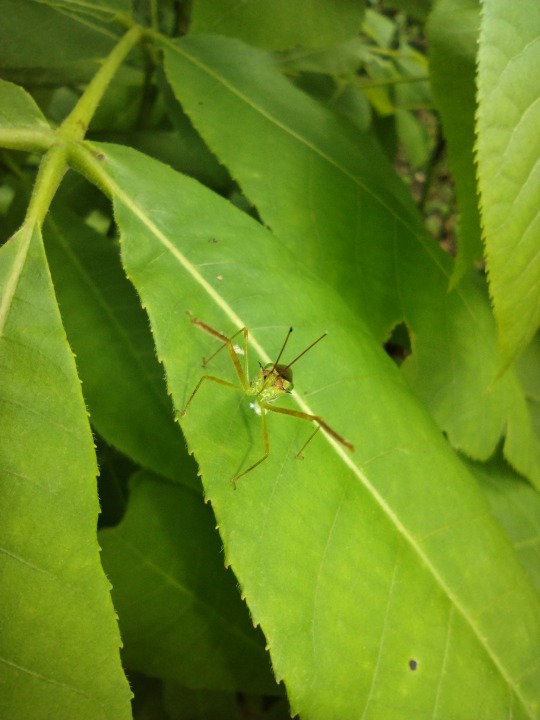


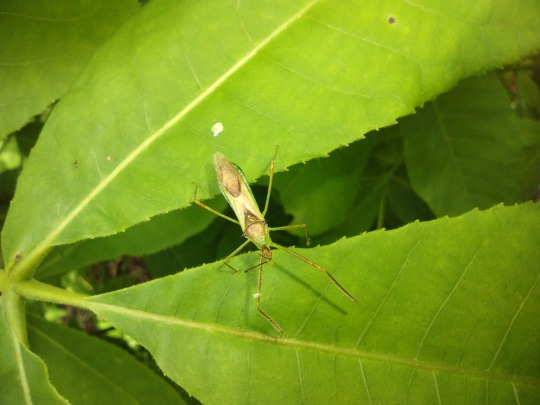
[PHOTOS TAKEN: APRIL 25TH, 2025 | Image IDs: Six photos of a green and brown pale green assassin bug on a relatively large, similarly green leaf /End IDs.]
Zelus luridus, Reduviidae!
#assassin bug#assassin bugs#reduviidae#true bugs#bugs#bug#Hemiptera#insect#insects#entomology#bugblr#arthropod#arthropods#invertebrates#Inverts#photos#photo#Wasp House Sights
14 notes
·
View notes
Text
@heshemikey
assassin bugs with stripes are so fucking silly to me 😭 like yeah your mouth is a superfast knife. but bro that is a circus animal
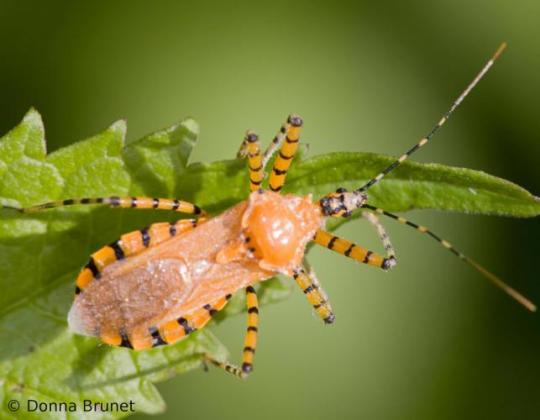
171 notes
·
View notes
